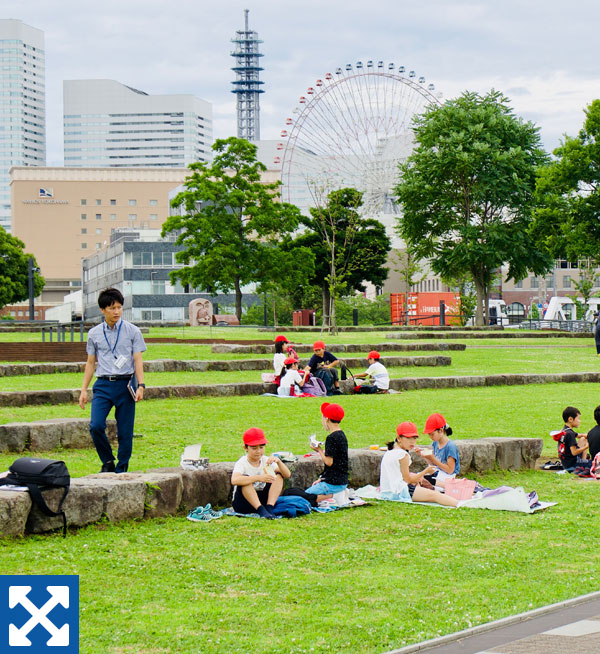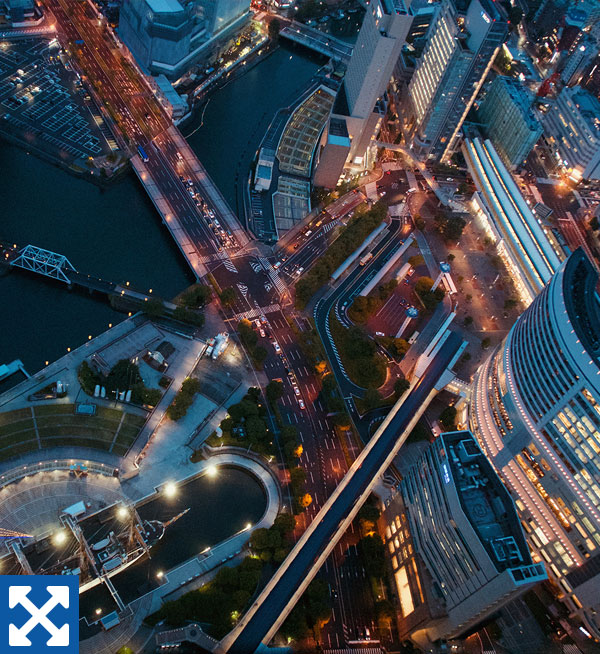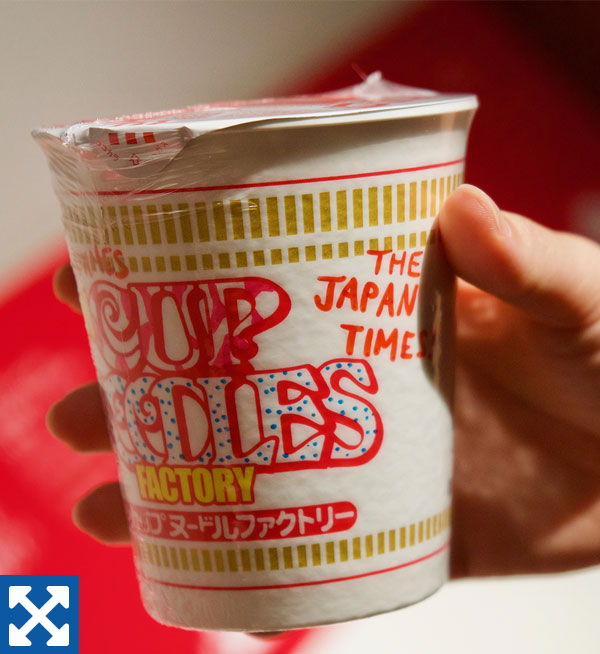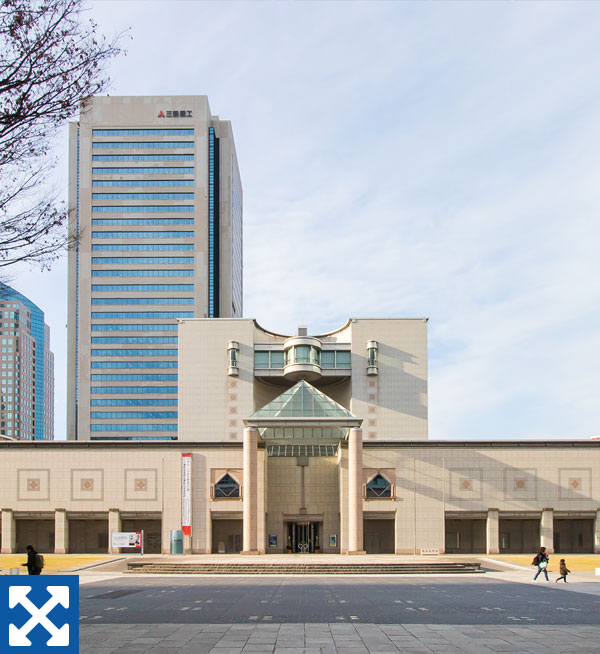Counting down to the Rugby World Cup 2019 … in Japan!
LIFE
A weekend in Yokohama
The instant attractionof Tokyo’s neighborNew meets old: Modern and traditional architecture contrast and complement on Yokohama’s waterfront, pictured here lit up at night. GETTY IMAGES
Get your fill in Yokohama, home to Chinatown and Cup Noodles
ALYSSA I. SMITH
Staff writer
A former fishing village that flourished into a bustling port town, Yokohama is now Japan’s second-most populous city and has a rich history as one of the first ports in Japan to be opened to foreign trade following the country’s sakoku (closed country) period (1639-1853).
Despite being only a 20-minute train ride from Tokyo’s Shinagawa Station, Yokohama feels like a true escape from the capital, with a downtown area that has a charm all of its own.
Friday
Smooth sailing — afternoon
Start your trip with a boat tour around the bay to take in some of Yokohama’s more popular attractions such as Yokohama Landmark Tower, Red Brick Warehouse and Minato Mirai 21. The Sea Bass (multiple stations; fares from ¥350) is an ocean bus that you can board near Yokohama Station’s East Exit and ride all the way to Yamashita Park.
If boats make you a bit queasy, or walking’s your preference, your first stop should be Osanbashi Yokohama International Passenger Terminal, more commonly known as Osanbashi Pier (Kaigandori 1-1-4, Naka-ku). The pier, which boasts a distinct wave-like design and a great view of the Yokohama skyline, was constructed between 1889 and 1896 as a then-modern port and harbor facility. It was reconstructed as a passenger terminal in 2002 to serve the modern-day boat traffic and increasing number of cruise liners using the port. The wooden floorboards and greenery are meant to resemble the smooth movement of rolling waves.
Bayside retreat — late afternoon
After leaving the windswept pier, head to Yamashita Park (Yamashitacho 279, Naka-ku), a popular spot for locals and tourists with a promenade that stretches along the waterfront and a number of wide-open spaces.
Board the NYK Hikawa Maru (Yamashitacho, Naka-ku), a large ocean liner that was active from the 1930s to ’60s, for a glimpse at how the rich and famous used to make trans-Pacific journeys, and to learn about the vessel’s involvement as a hospital ship in World War II.
Haute cuisine, city views — dinner
Throw yourself in at the deep end of Yokohama’s fine dining scene at Sagami, up on the 28th floor of the Yokohama Bay Sheraton Hotel & Towers (Kitasaiwai 1-3-23, Nishi-ku). Located near Yokohama Station, the restaurant serves an elegant teppanyaki (iron grill) meal with a glittering view of the city at night.
The restaurant’s decor is inspired by the interior of a ship’s cabin, a fitting homage to the port city’s history. Sagami serves wagyu beef, fresh seafood and vegetables grilled to perfection by the chef in front of you.
The decadent “meat sushi” option is changed each month by the chefs and includes a variety of ingredients including cuts of sirloin and fillet steak, caviar and foie gras. It is not to be missed.
Welcome to Chinatown: Yokohama Chukagai is the largest Chinatown in Japan, home to Chinese restaurants, shops and the city’s Chinese population. Each of its four main entrances is marked by an ornate gate. GETTY IMAGES
Saturday
Chinese whispers — late morning, lunch
Yokohama’s Chinatown, known to the locals as Yokohama Chukagai (Yamashitacho, Naka-ku) is Japan’s largest, with four beautiful gates marking its entrances. At its center is the brightly colored Kanteibyo temple (Yamashitacho 140, Naka-ku), dedicated to Kanwu, a legend of Chinese folklore who has become a god of business and prosperity.
For lunch, you can’t really go wrong at many of the restaurants in Chinatown, but Manchinro (Yamashitacho 153, Naka-ku) is hard to beat. One of the oldest restaurants in the area, it has an atmosphere of grandeur that will elevate your lunch into a dining experience. You can choose from a variety of courses or select items from the menu a la carte, but the māpō dōfu (spicy tofu with ground meat) alone is worth the trip, so make sure to include it in your order.
Parks and recreation — afternoon
Once you’ve had your fill at Manchinro — without forgetting to indulge in a few geppei (mooncakes) and some tapioca tea from the Chinatown street vendors — catch a bus to Sankeien Garden (Honmokusannotani 58, Naka-ku; ¥700 entry) to digest in peace and quiet.
The lush Japanese garden is an oasis of calm: The grounds have several smaller gardens with ponds, rivers and flowers, as well as the former residence of a daimyo of the Kishu Tokugawa clan, tea houses and a three-story pagoda. At the Sankei Memorial Hall building within the gardens, you can sip on green tea and nibble on traditional snacks while watching a demonstration of Japanese tea ceremony. If you’re lucky, you may even get to make a serving of matcha yourself.
Award-winning beer — evening
If you’re looking for something stronger than tea as the day winds down, Yokohama has plenty of craft breweries to choose from.
Established in 2011, Yokohama Bay Brewing (Higashidori 2-15, Fukutomicho, Naka-ku) creates award-winning beers, as well as the official beer of the Yokohama DeNA Bay Stars baseball team, and has made its mark on the city’s growing “beer district” of Kannai. The bar has a simple food menu to accompany the wide variety of brews on tap.
Sky’s the limit — night
Wrap up your day at the Sky Garden in Yokohama Landmark Tower (Minatomirai 2-2-1, Nishi-ku). You can reach the observation deck on the 69th floor of the structure in under 40 seconds by riding one of the fastest elevators in the world. Once there, you’ll have a remarkable 360-degree view of the city.
Invented in Yokahama, eaten in space: A wall of instant ramen packet designs at the Cupnoodles Museum Yokohama. CHISATO TANAKA
Sunday
Oodles of noodles — morning
When you come to Yokohama, be sure to bring a healthy appetite because this city truly loves ramen.
Your first stop should be the Cupnoodles Museum Yokohama (Shinko 2-3-4, Naka-ku). This museum is all about defying expectations and thinking creatively, in honor of Momofuku Ando, the founder of Nissin Food Products and the inventor of Chicken Ramen — the world’s first instant noodles — and Cup Noodles.
The austere lobby resembles the entrance of a grand art museum or a concert hall. Once inside, you can go through a fun, interactive exhibit that showcases the history of Ando’s creations, the Chicken Ramen and Cup Noodles, and how his products have been consumed all over the world (and even in outer space).
The museum also offers activities that will entertain visitors of all ages. At the My Cupnoodles Factory, you can create a one-of-a-kind cup of instant ramen for ¥300 per cup, picking everything from the design of the container to the flavor of the soup and its toppings.
If you’re interested in a more hands-on experience, join the 90-minute cooking tutorial at the Chicken Ramen Factory. Here you can make noodles from scratch, kneading, spreading and steaming the flour to create your very own freshly made instant noodles. The cooking activities are carried out in pairs. Be sure to make reservations in advance as spaces are limited and fill up quickly.
Keep slurping — lunch
Still in the mood for noodles? Why wouldn’t you be? Head to the museum’s Noodles Bazaar, where you can try out noodle dishes from eight different countries, including laksa from Malaysia, tom yum goong noodles from Thailand and Kazakhstani laghman. Those with more adventurous appetites should try the Cup Noodle-flavored soft-serve ice cream.
Picasso meets Edo — afternoon
Not far from the Cupnoodles Museum is the Yokohama Museum of Art (3-4-1, Minatomirai, Nishi-ku; ¥500 entry). The museum’s focus is on art from the mid-19th century onward, when Yokohama was opened up to the world as a port city. Its permanent collection includes works by Dali, Magritte and Picasso, as well as pieces by Japanese artists associated with the Yokohama area since the Edo Period (1602-1868).
The museum’s main building was designed by leading architect Kenzo Tange (1913-2005) and has a vast, Greco-Roman inspired geometric facade supported by a columnade.
The final stadium — late afternoon
Take the subway north to the International Stadium Yokohama (Kozukuecho 3300, Kohoku-ku), which will host seven games for the Rugby World Cup, including the tournament’s final.
The stadium is surrounded by Shin-Yokohama Park, which has a variety of facilities including tennis courts, a skate park and a water park (read: pool with slide). Most of these require you to be a resident of Yokohama to use, but the park is an excellent spot for a run to work off your earlier noodle marathon.
This is the twelfth and final installment of a monthly series introducing each of the 12 host cities of the 2019 Rugby World Cup.
To read more weekend guides to the host cities of the Rugby World Cup 2019, visit features.japantimes.co.






